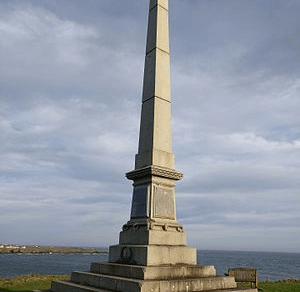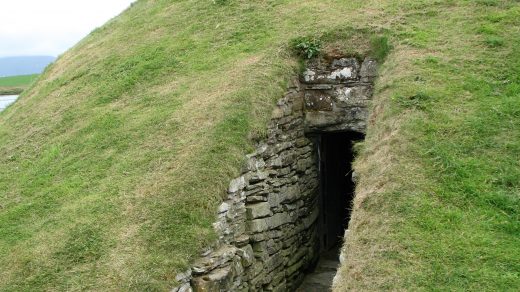The Scottish Highlands.
The whole of Scotland was covered by ice sheets during the Pleistocene ice ages and the landscape is much affected by glaciation. From a geological perspective, the country has three main sub-divisions.
The Highlands and Islands lie to the north and west of the Highland Boundary Fault, which runs from Arran to Stonehaven. This part of Scotland largely comprises ancient rocks from the Cambrian and Precambrian, which were uplifted during the later Caledonian orogeny. It is interspersed with igneous intrusions of a more recent age, remnants of which formed mountain massifs such as the Cairngorms and Skye Cuillins.
The Scottish Highlands, located in the north west of Scotland

A significant exception to the above are the fossil-bearing beds of Old Red Sandstones found principally along the Moray Firth coast. The Highlands are generally mountainous and the highest elevations in the British Isles are found here. Scotland has over 790 islands divided into four main groups: Shetland, Orkney, and the Inner Hebrides and Outer Hebrides. There are numerous bodies of freshwater including Loch Lomond and Loch Ness. Some parts of the coastline consist of machair, a low-lying dune pasture land.
The Central Lowlands is a rift valley mainly comprising Paleozoic formations. Many of these sediments have economic significance for it is here that the coal and iron bearing rocks that fuelled Scotland’s industrial revolution are found. This area has also experienced intense volcanism, Arthur’s Seat in Edinburgh being the remnant of a once much larger volcano. This area is relatively low-lying, although even here hills such as the Ochils and Campsie Fells are rarely far from view.
The Southern Uplands are a range of hills almost 200 kilometres (124 mi) long, interspersed with broad valleys. They lie south of a second fault line (the Southern Uplands fault) that runs from Girvan to Dunbar. The geological foundations largely comprise Silurian deposits laid down some 400–500 million years ago. The high point of the Southern Uplands is Merrick with an elevation of 843 m (2,766 ft). The Southern Uplands is home to Scotland’s highest village, Wanlockhead (430 m or 1,411 ft above sea level).
Climate
Main article: Climate of Scotland
Tiree, one of the sunniest locations in Scotland
The climate of most of Scotland is temperate and oceanic, and tends to be very changeable., As it is warmed by the Gulf Stream from the Atlantic, it has much milder winters (but cooler, wetter summers) than areas on similar latitudes, such as Labrador, southern Scandinavia, the Moscow region in Russia, and the Kamchatka Peninsula on the opposite side of Eurasia. However, temperatures are generally lower than in the rest of the UK, with the coldest ever UK temperature of −27.2 °C (−17.0 °F) recorded at Braemar in the Grampian Mountains, on 11 February 1895.[135] Winter maxima average 6 °C (43 °F) in the Lowlands, with summer maxima averaging 18 °C (64 °F). The highest temperature recorded was 32.9 °C (91.2 °F) at Greycrook, Scottish Borders on 9 August 2003.
The west of Scotland is usually warmer than the east, owing to the influence of Atlantic ocean currents and the colder surface temperatures of the North Sea. Tiree, in the Inner Hebrides, is one of the sunniest places in the country: it had more than 300 hours of sunshine in May 1975. Rainfall varies widely across Scotland. The western highlands of Scotland are the wettest, with annual rainfall in a few places exceeding 3,000 mm (120 in). In comparison, much of lowland Scotland receives less than 800 mm (31 in) annually. Heavy snowfall is not common in the lowlands but becomes more common with altitude. Braemar has an average of 59 snow days per year, while many coastal areas average fewer than 10 days of lying snow per year.




Hey, Billy. It’s good to see you getting things back in order, and the new format looks great. Thought I should mention, though, that I’m not getting a “like” option and instead I get that dreaded “loading” advisor where the action buttons should be. (This was working at first, but something seems to have changed in the last few days.) Perhaps you could check your settings? Good luck!
awe darn, thank you Brian mate there is always something, hehe thanks mate, will try and see what the issue is, and thanks for coming back mate.